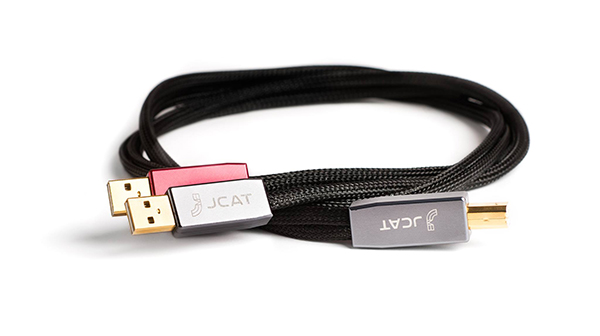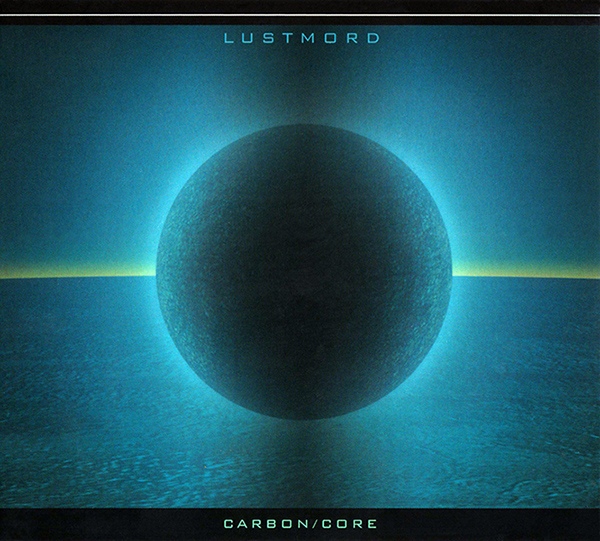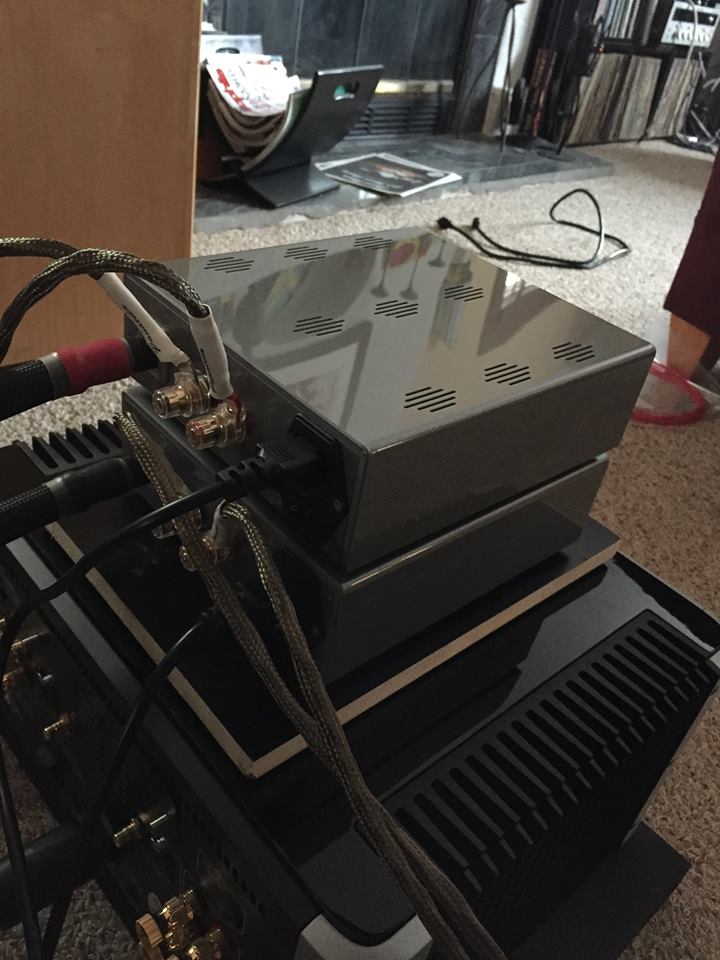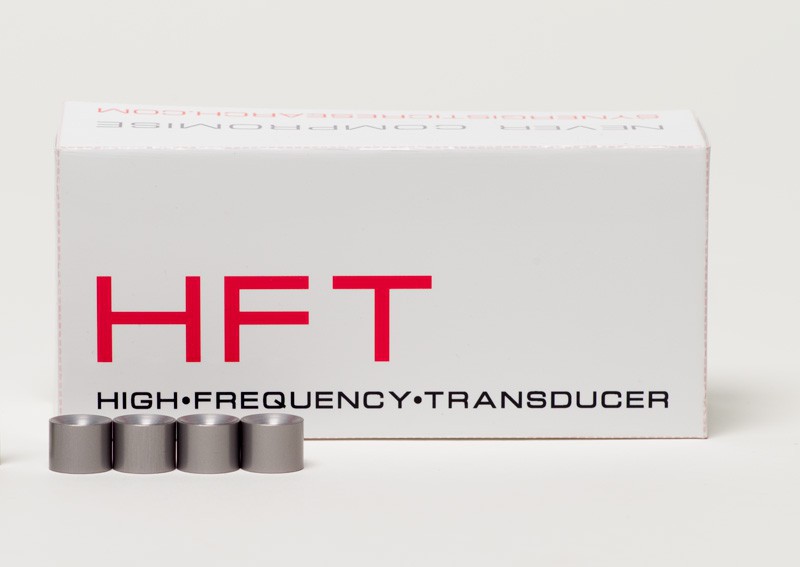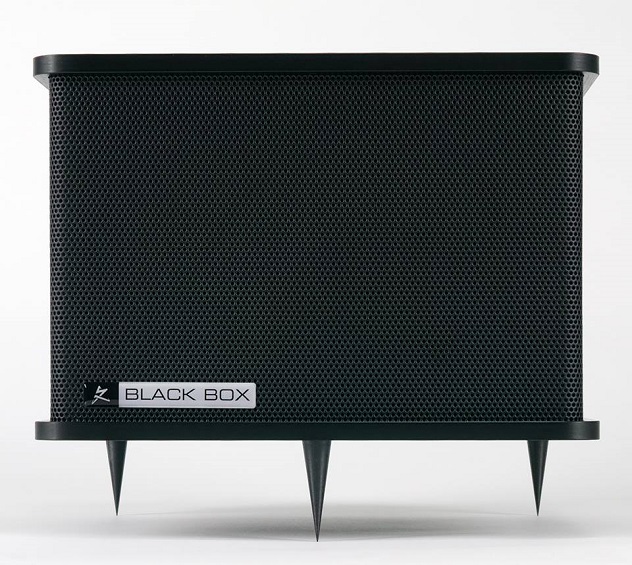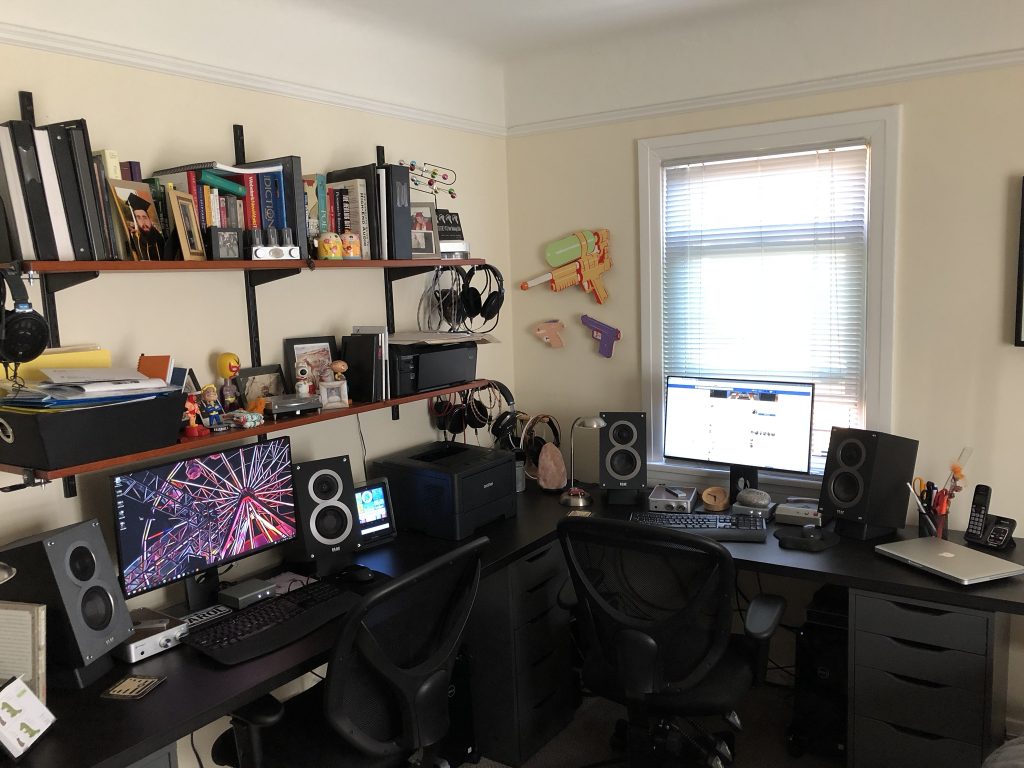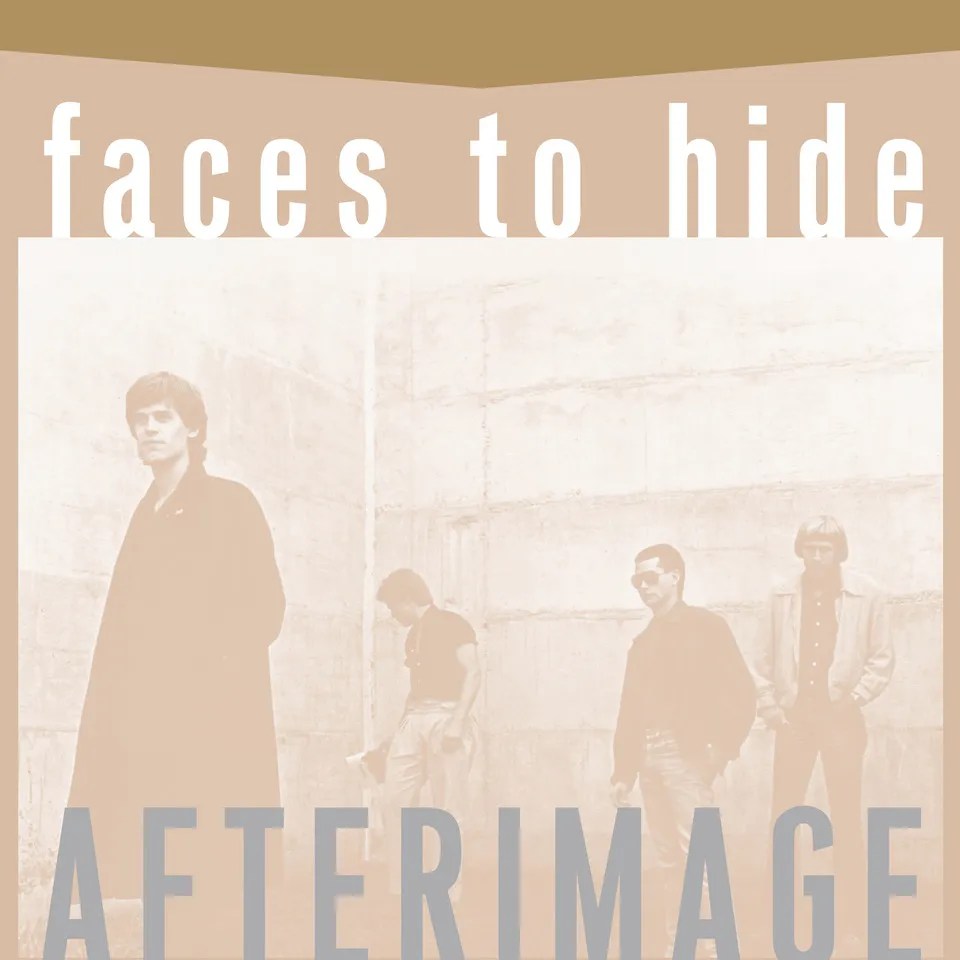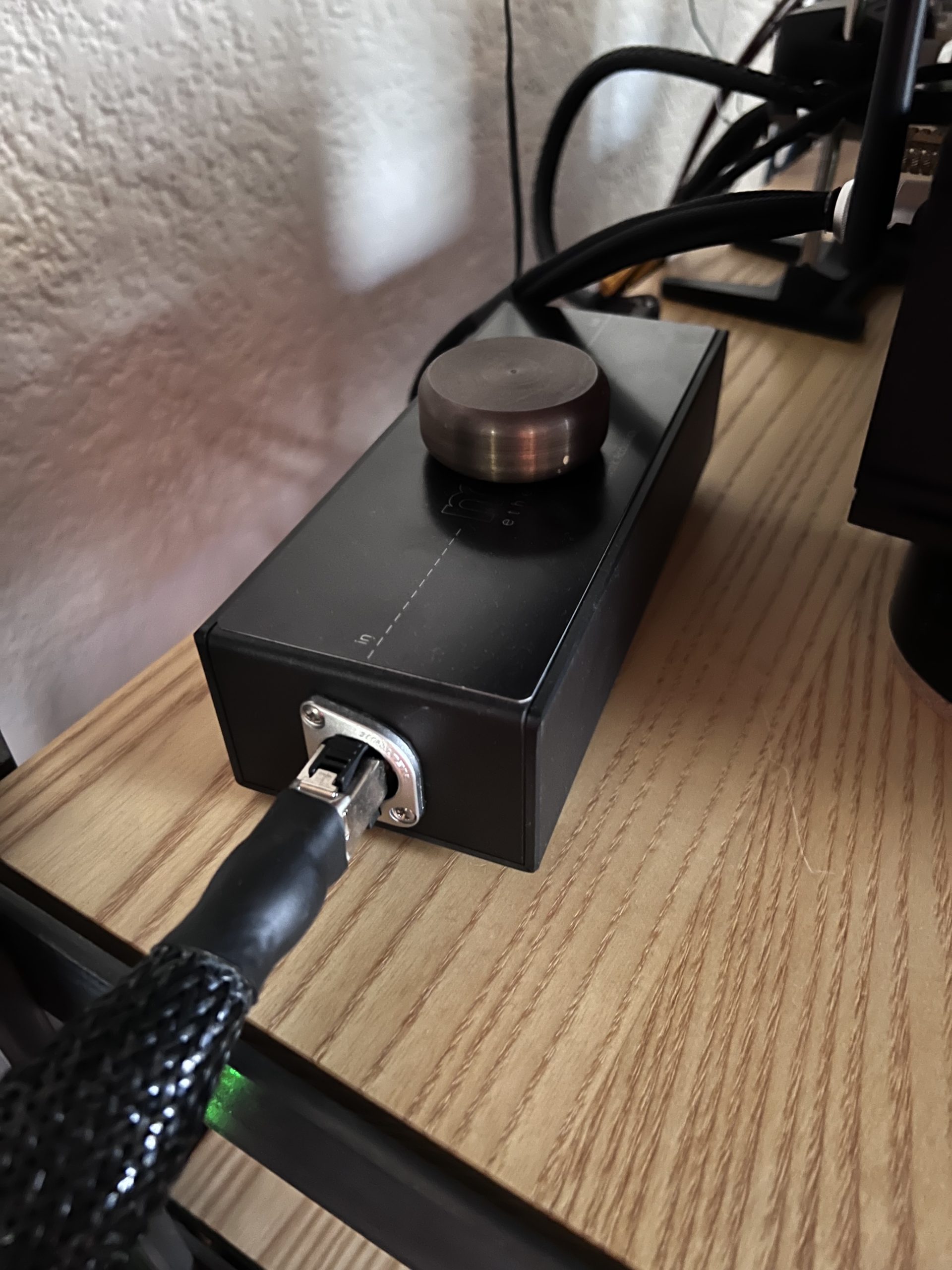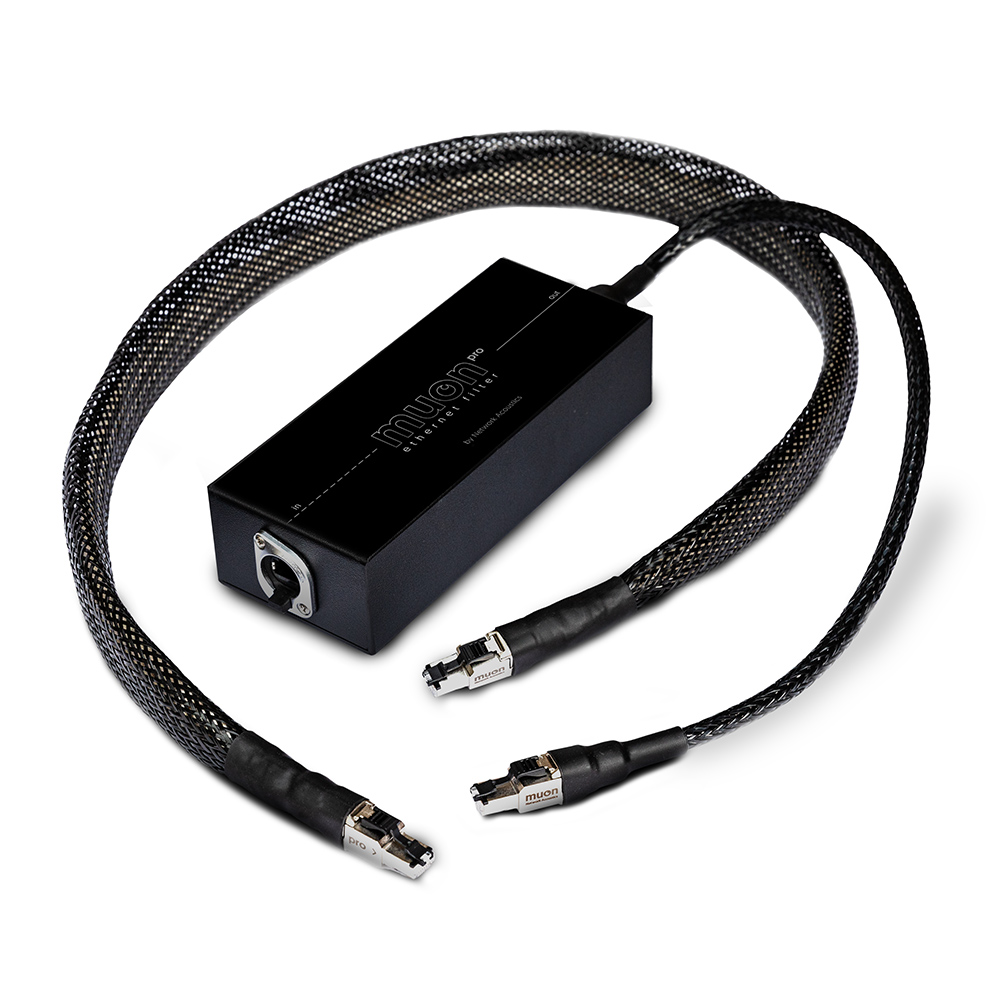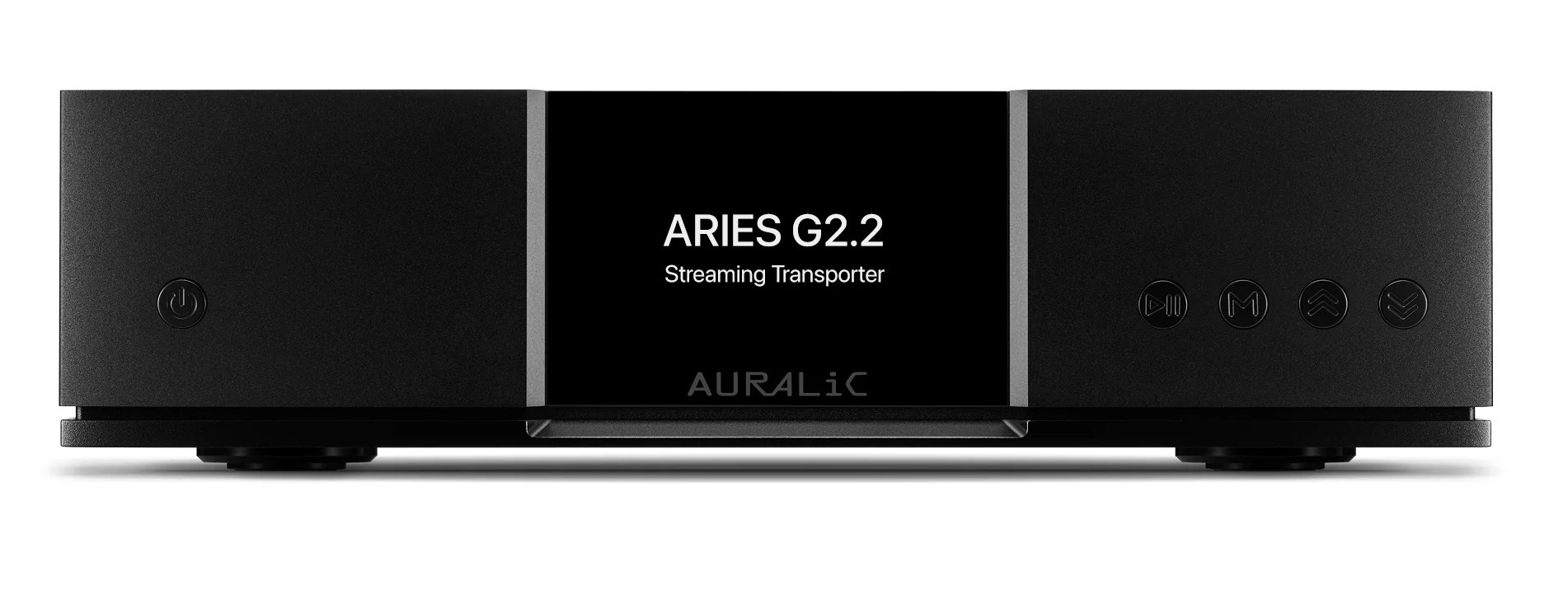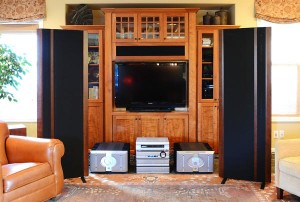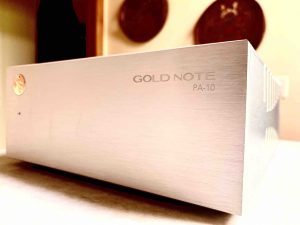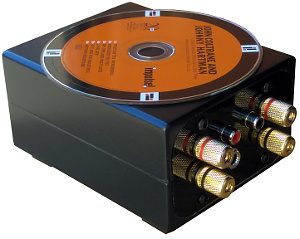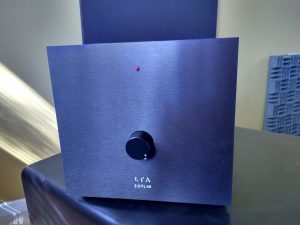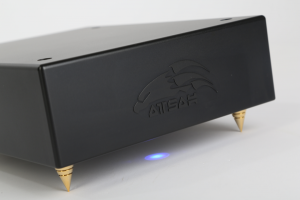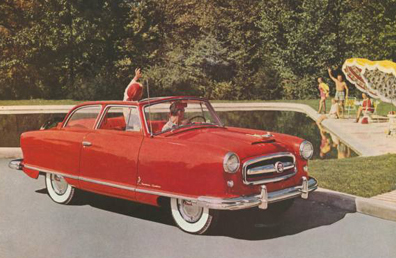
Not sure how this came about, but man do I have a lot of stuff here to review… the PS Audio BHK250 amplifier and their AC12 and AC5 power cables, the Aurender N100H streamer, the Entreq Poseidon Grounding box and cables, several items from Synergistic Research (Black Box, Atmosphere, MiG, and HFT), iFi Audio's new USB 3.0, USB Purifier2, and iDac2 (and their USB cables), audiomods' Micrometer Series Five tonearm (modified Rega 303), USB cables from Audience, JPLAY, Curious, and Sablon Audio, the USB Regen from UpTone Audio, Switch-mode upgrade for the Regen from SBooster, the DiD isolation devices from Daedalus Audio, and the Acoustic Imagery Atsah 500 amplifiers… yikers!
I mean this is simply overwhelming and never-ending, and while it sounds fun, it is a lot of work that requires time and listening. Damn it Jim, things have gotten out of control! So my thoughts on how best to deal with this, as people are getting a bit short with respect to patience (and clearly understood), is a series of short bits spending some time with any and all as my brain will allow.
Where to start? How about with the JCAT Reference USB cable from JPLAY? Clearly cut from the fold of more is better than less, these extremely well built and rich looking USB cables deliver on all fronts—giving you clearly more for the money. The JCAT Reference USB cable offers a vivid and revealing presentation that stresses musicality over everything else. That is, the JCAT Reference USB cable is well balanced with nothing to draw attention to itself other than how your music is presented in the room: clean, articulate, warm though never too warm to make the music overly so, tight and extended at the bottom but airy and smooth at the top… and when combined with a deep and wide soundstage with a palpable presence… yeah baby… this cable swings. Never bright, hard, glary or etched… Marcin Ostapowicz has pulled off a real winner here; meaning this cable rocks.
Playing various tracks from either MY DISCO (Severe) and Lustmord (Carbon/Core)—both of which are quite powerful and well recorded—things get scary real quick. Dynamics, space, slam, punch… playing either of these as a decent volume can really push a system. The atmospheric soundscapes created by Brian Williams (Lustmord) are startling intense. Not like a circus which would be in tents, but like some other worldly landscape that is brought to light via his electronic manipulations. My Disco is anything but disco… from their site "MY DISCO have always employed space as an instrument. Space between notes; space between instruments; even space between albums, as the Australian trio prepares to release Severe, their first full-length record in nearly five years. More than just a title, Severe pushes MY DISCO's subtle, intensely focused, minimalist sound to its most terrifying extreme. It is bleak, occasionally uncomfortable, and unpredictably profound. Severe is an album of aggravated tonal darkness and long breaths of disturbing silence, punctuated by pounding stabs and heavy, hypnotic rhythms."
Yeah, with the JCAT you get that. You get that and more. Fun, fun, fun times. Nice.
The JCAT Reference USB cable features separate 'lines' for the signal and power to address noise and such along with… ah screw it, let me just pull this from their site: dual-lead design: separate leads for USB data lines and power (2x Type-A USB, 1x Type-B USB connectors), silver plated triple-shielded copper, double-shielded connectors (nickel plated copper & aluminum), multi-core extremely slim conductors, multi-stranded, Teflon coated, and 90 ohm impedance (USB standard).
With the appearance of a cable that say Porsche would make (fit and finish are in a class of their own)—of which would mean squat if the proof was not in the pudding—the JCAT Reference USB cable not only walks the walk, but it talks the talk. I would place this cable among the best out there (there are now so many quality reference USB cables to choose from that clearly better a stock-generic USB cable in every way) and find myself loving it in all aspects. Not that I don't love other cables too, as each offers an ever so slightly different take on how to get the music from A to B resulting in an ever so slightly different presentation (can't drink the same great beer every night—too many other great beers out there offering a different experience), but for sure the JCAT Reference USB cable is quite the deal. At about $550 US for 1 meter the cable is pretty much a steal. A more in-depth review can be found over on AudioStream so give them a visit. My goal would be to get a 1.5 meter to use in a different configuration, thereby allowing a follow-up. We shall see. As it stands the JCAT Reference USB cable clearly addresses the issues mentioned HERE as it is easily a reference USB cable—and no pun intended.
Last year I went nuts over the Acoustic Imagery Atsah 1200 amplifiers (HERE): stunningly musical with such an engaging and extended yet controlled bottom end, these would be on my list for a must have with respect to amplification that simply gets out of the way. But then comes along the Acoustic Imagery Atsah 500 amplifiers (the little brothers to the 1200) and what the "hey"… same sound, same presentation… same engaging quality with nary a pick to nit. Certainly not perfect and for sure a step down from the 1200, but man do these make one not double guess what is going on. They work. They play music. They are clean and articulate with the same chameleon-like quality that the 1200 had brought to the table. Not really sounding like a tube amp, though they do to a certain extent; and not like a solid-state, though they do to a certain extent… no, the Acoustic Imagery Atsah 500 amplifiers sort of fall somewhere in-between offering the best of both sides of the fence.
The Acoustic Imagery Atsah 500 amplifiers offer this via Hypex NCore amplifier technology with an ultra low noise power supply. Based on the designs of Bruno Putzeys, co-founder and designer of Mola Mola Audio who is the go to guy of all things NCORE, the Atsah amplifiers are right up there in maximizing the implementation of this technology.
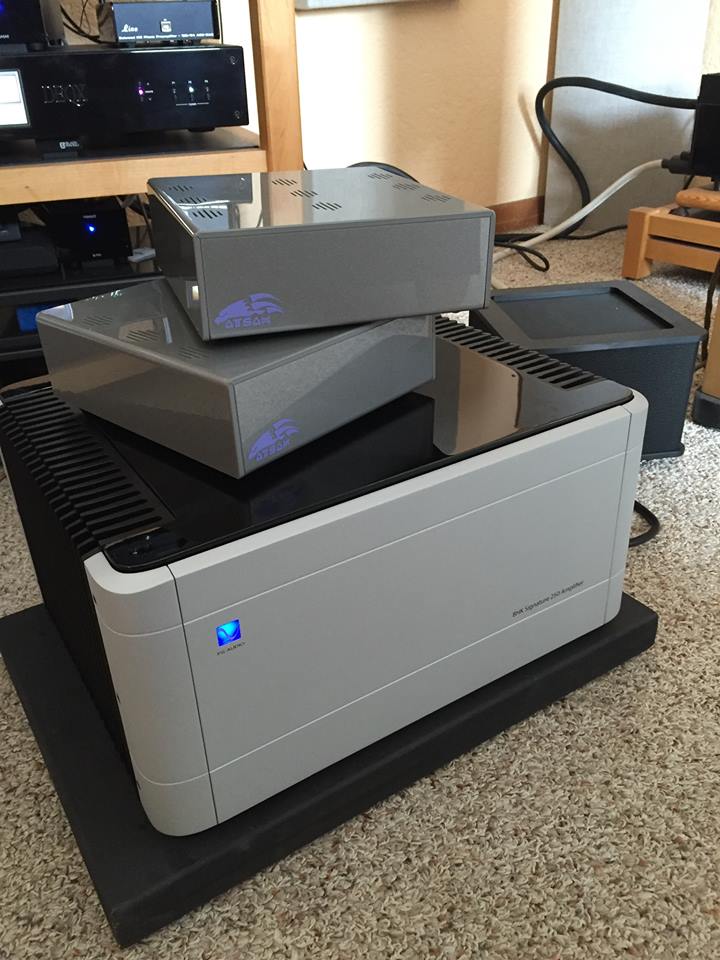
Taken from their site…"The Atsah 500 monoblocks incorporate the NC500 NCore modules, an SMPS1200A700 power supply per amp and are housed in a stunningly beautiful silver or carbon fiber composite chassis. What makes these amplifiers so unique is the ultra low noise floor. So low in fact that most test equipment cannot measure it. A 128dB signal to noise ratio is quieter than most source gear. Meaning music emerges from the blackest of black backgrounds, giving you every nuance, every bit of ambiance that is in the recording."
That pretty much sums up what you hear. Way resolving as the music is there with nothing obscuring the view. Try. You must. Sadly I only had these here for a few days so my comments are limited, but even so, I have these ahead of the 1200s simply because you get so close for 1/5 the price. A no brainer. The amps ran cool and quiet. Dead quiet. No problems. Easy to use, light and small… count me in.
What's next? Well… my fellow PF partner David Robinson went nuts over the Synergistic Research items I mentioned above (read that HERE) and yeah… I get it. I get it, no I got it big time. This stuff does stuff that makes putting this stuff into words, difficult stuff to do. Scary.
You want airy? You want space? I mean real space… tangible and palpable space that is there. A bigger there… there. Right there, but also all around there? Here too. You want articulation and presence? You want focus? That is what the Atmosphere and HFTs do… and not in a subtle way. Easy to set up and easy to ignore visually, but impossible to ignore aurally. Guilty. Yeah, SR's own Peter Hansen came buy one Saturday with a box of HFTs, the Atmosphere ATM (the black tower-like thing where one places the ATM on top) and a bevy of MiG isolation devices (bell shaped cones that go under comments—these have an HFT inside and are actually called MiG 2.0 Mechanical Interface Grounding feet) along with a Black Box (The Black Box is a small-ish LF - Low Frequency - Resonator Array that elegantly and simply solves bass node issues in most rooms).
We listened to some tunes and then he set all the HFTs (high frequency transducers) on the walls and speakers in a matter of 5 mins (so easy and quick I was taken aback that there were where they were without us noticing him placing them in strategic and yet obvious locations, more HERE), dropped the Atmosphere ATM in the center of the two racks, plopped the Black Box in a corner near a speaker and sat back and said let it play again. We did. And we did again. And again. And then we sat dumbstruck. What just happened? Wait… wait a minute. That can't be right? Uh… what the… dude these little disc-like bell-like nibs are so little but the affect is so big. Add in the ATM to maximize or better yet energize the little buggers and the soundfield swells to a size that is so captivatingly right. Images are way more there, focus is spot on, presence is up but not annoyingly artificial… you have air in the sense of being in a way bigger room allowing for the music to swell and … move. To live and breathe. Things connected and articulated in way we had never experienced prior. Yeah, we loved it before but damn were we not ready for a change in relationships. This was such a change for the better that skip the escort, let's get to the marriage. Sold. Convinced.
Fun thing is that the ATM app for your iPad allows you to adjust the affect to varying degrees that match either the music or your mood. Nothing to wear out or to break in with either the HFT or ATM, they work from the get go. Do they get better over time? Nah… love at first listen. Solid and stable. The music has way more air and presence than before. These things work. How do they do what they do... or better yet, what are they actually doing? You can go HERE on the Synergistic Research site for some background on the HFT and HERE for the Atmosphere. You might not like what they have to say on either page but I can attest that they do what they do. Can I explain how they are doing what they are doing? No. but I find them a necessity for listening pleasure. Scary good.
Oh and then there was the Black Box. Carol can chime in here… I first heard a demonstration of the Black Box at RMAF. The difference was stunning, and to my ears very noticeable. Dave can fill you in on the way the thing works; all I know is that after RMAF I wanted to try it here at home. When we did, using music I'm more familiar with, the first thing I noticed was how it cleaned up the vocals, they sounded clear and tight. There was less of an edge to the high notes. The bass was also cleaner, clearer, and less thumpy. Everything seemed more enjoyable. These are things that you notice when something like this comes in the room. It's not that the system was bad before, it was just an astounding difference after we put it in the room. I trust my own ears, as far as anything new we add to our system, and I was quite pleased with the difference. As far as I'm concerned, it's not going anywhere! Very impressive!
Ditto what I wrote about MY DISCO and Lustmord. The Synergistic items take all that and maximizes what is said above. No, actualizes the releases making them alive. Realness… Damn.
More on the Synergistic items and … up next… iFi, Audiomod, and Daedalus Audio DiD. Then the PS Audio BHK250 amplifier and their AC12 and AC5 power cables along with the Entrq Grounding Boxes... and then the Aurender N100H streamer! And more!
JPLAY
Acoustic Imagery
www.acousticimagery.audio
Synergistic Research




